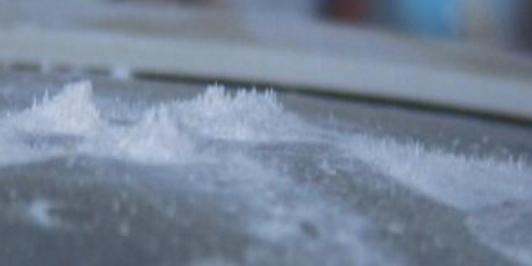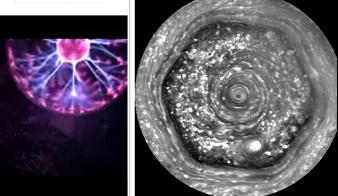When I started working on this, my original intention was to propose that the polygonal arrangement of current filaments was a hitherto unrecognised but fundamental property of Birkeland currents. I would also like to have proposed that the filamentation process occurs at much lower current densities than previously thought i.e. when the currents are in dark mode. However, I didn't have anywhere near enough evidence to support this theory so I decided to concentrate on one way in which this polygonal arrangement can be seen to manifest itself i.e. the concentric polygonal layers of an arc discharge. I thought this a better idea as I had enough supporting evidence for this and thus didn't dilute what I had or risk the whole lot being dismissed because of lack of supporting evidence.nick c wrote:The process is observed on a variety of scales.E of E wrote:I don't think polygonal craters could be formed by a maintained arc, or 'steady stream of plasma', as the natural tendency of Birkeland currents is to spiral. This would result in the arc constantly rotating, which would cut a circular outline and not a polygonal one.
See Galactic Hexagon:also:Diocotron instabilities in the Birkeland current filaments are most likely responsible for the hexagonal shapes seen in galaxies. Electric power can act with trillions of times more force than gravity.
Saturn's HexagonBeams of electricity flowing through plasma produce a central column surrounded by concentric cylinders. The cylindrical filaments create evenly spaced vortices surrounding the column. As the filaments rotate around one another, a preferred hexagonal cross-section forms within the innermost column.
For example, I would say that Saturn's polar hexagon is a disturbance in Saturn's magnetosphere caused by the presence of Birkeland currents being restrained into a hexagonal geometry by their own radial magnetic fields. These currents must flow somwhere and connect to something; much like Earth's polar Birkeland currents flow to somewhere and connect to something i.e. the sun. But this is a big idea and requires substantial evidence to support it.
With this in mind, when we look at the experiments being carried out by Zane and others, where hints of a polygonal outline are produced by discharges of low current density, which are possibly in dark mode, then we begin to see supporting evidence for the idea that not only does filamentation occur at low current densities, but that even in dark mode the filaments are already being forced to adopt a close packing arrangement resulting in the characteristic hexagonal or octagonal geometry seen on a large scale.
So experiments like those which produced the images seen in this thread so far, don't so much support my theory regarding crater formation, as provide more supporting evidence for the bigger idea I would have liked to propose. In this respect such experiments are invaluable in establishing the fact that wherever such hexagonal and octagonal arrangements are seen, they are a reliable indicator of the presence of Birkeland currents restrained by their radial magnetic fields.



